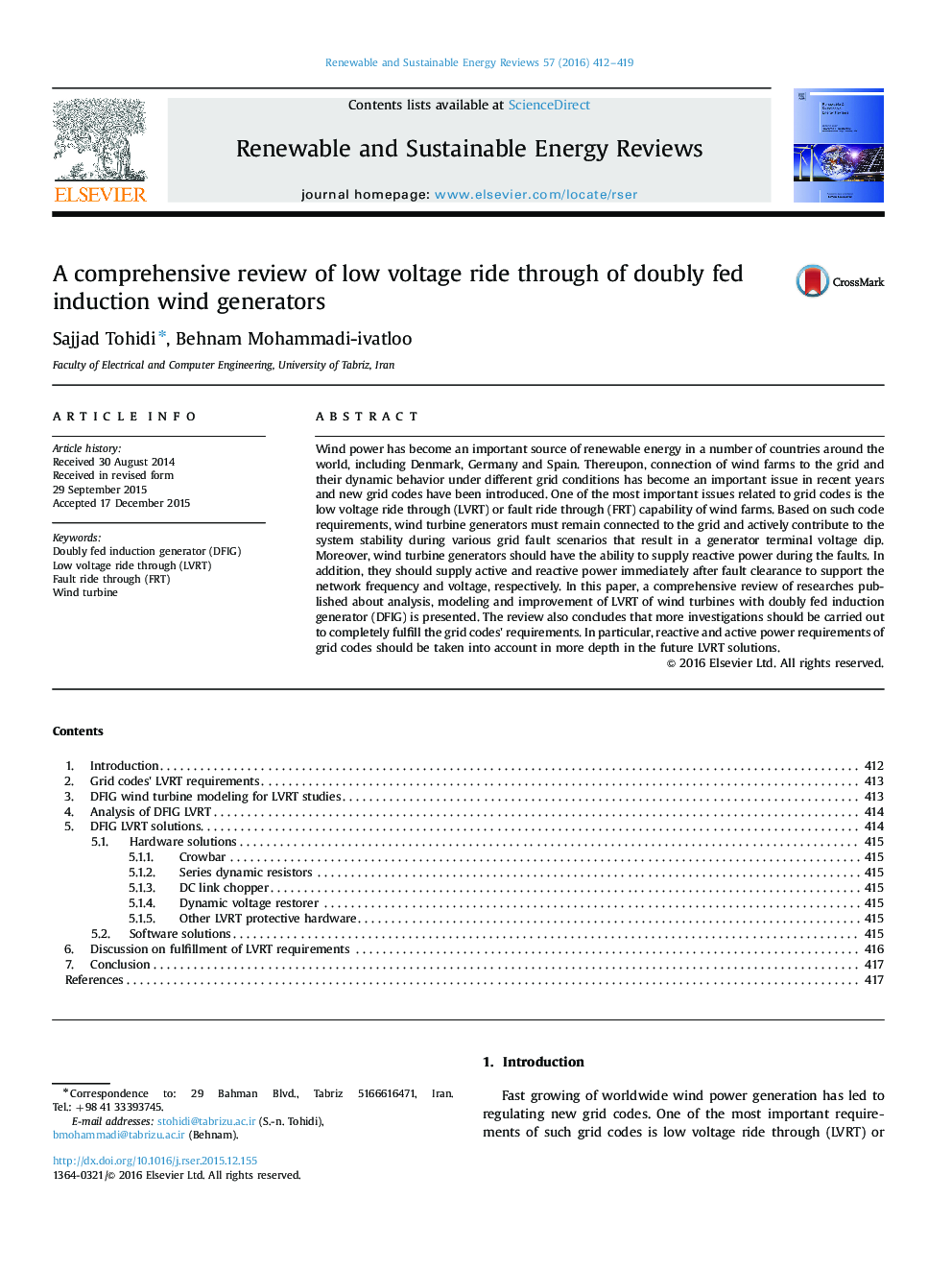| Article ID | Journal | Published Year | Pages | File Type |
|---|---|---|---|---|
| 8114554 | Renewable and Sustainable Energy Reviews | 2016 | 8 Pages |
Abstract
Wind power has become an important source of renewable energy in a number of countries around the world, including Denmark, Germany and Spain. Thereupon, connection of wind farms to the grid and their dynamic behavior under different grid conditions has become an important issue in recent years and new grid codes have been introduced. One of the most important issues related to grid codes is the low voltage ride through (LVRT) or fault ride through (FRT) capability of wind farms. Based on such code requirements, wind turbine generators must remain connected to the grid and actively contribute to the system stability during various grid fault scenarios that result in a generator terminal voltage dip. Moreover, wind turbine generators should have the ability to supply reactive power during the faults. In addition, they should supply active and reactive power immediately after fault clearance to support the network frequency and voltage, respectively. In this paper, a comprehensive review of researches published about analysis, modeling and improvement of LVRT of wind turbines with doubly fed induction generator (DFIG) is presented. The review also concludes that more investigations should be carried out to completely fulfill the grid codes׳ requirements. In particular, reactive and active power requirements of grid codes should be taken into account in more depth in the future LVRT solutions.
Keywords
Related Topics
Physical Sciences and Engineering
Energy
Renewable Energy, Sustainability and the Environment
Authors
Sajjad Tohidi, Behnam Mohammadi-ivatloo,
